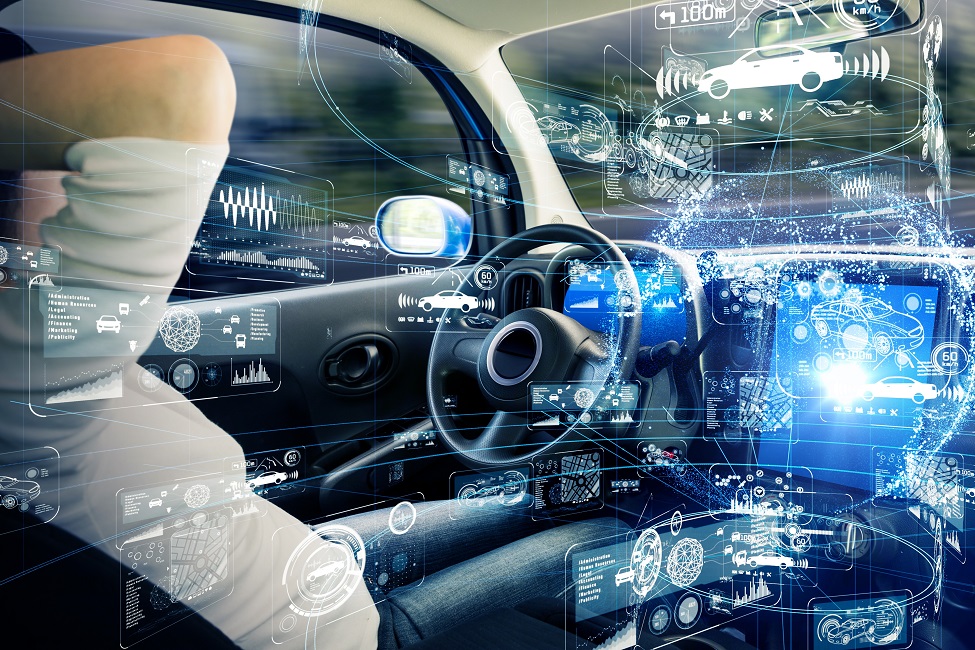As we stand on the brink of a technological revolution, how AI is shaping the future of autonomous vehicles has become a pivotal topic in the automotive industry. Artificial intelligence is not just a buzzword; it is the driving force behind the development of self-driving cars, enabling them to navigate complex environments, make real-time decisions, and enhance overall safety. With advancements in machine learning, computer vision, and sensor technology, AI is transforming traditional vehicles into intelligent machines that promise to redefine our transportation systems.
In this article, we will delve into the various ways AI is influencing the design and functionality of autonomous vehicles. You will learn about the critical role of AI in improving safety features, optimizing traffic management, and personalizing user experiences. We will explore how AI algorithms analyze vast amounts of data from sensors and cameras to make split-second decisions that can prevent accidents and enhance driving efficiency. Additionally, we will discuss the ethical implications and regulatory challenges that come with the integration of AI in autonomous driving.
Join us as we uncover the exciting advancements in AI technology and their implications for the future of transportation. Whether you are a tech enthusiast, a car lover, or simply curious about the future of mobility, this article will provide you with valuable insights and a deeper understanding of how AI is revolutionizing the automotive landscape. Read on to discover the future of driving!
The Role of Machine Learning in Autonomous Driving
Machine learning is at the core of AI technologies that enable autonomous vehicles to learn from data and improve their performance over time. By analyzing vast amounts of data collected from sensors, cameras, and other sources, machine learning algorithms can identify patterns and make predictions about the vehicle’s environment. This capability allows autonomous vehicles to navigate complex scenarios, such as recognizing pedestrians, cyclists, and other vehicles on the road.
Moreover, machine learning enhances the decision-making process of autonomous vehicles. By continuously learning from real-world experiences, these vehicles can adapt to changing conditions, such as weather variations and traffic patterns. This adaptability is crucial for ensuring safety and efficiency in autonomous driving, making machine learning a fundamental component of the technology.
Sensor Technologies and Data Fusion
Autonomous vehicles rely on a combination of sensor technologies, including LiDAR, radar, and cameras, to perceive their surroundings. Each sensor type has its strengths and weaknesses, and data fusion techniques are employed to integrate the information from these sensors into a cohesive understanding of the environment. This process is essential for creating a reliable perception system that can accurately detect obstacles and navigate safely.
Data fusion not only improves the accuracy of object detection but also enhances the vehicle’s ability to make informed decisions. By synthesizing data from multiple sources, autonomous vehicles can achieve a more comprehensive view of their surroundings, leading to better navigation and obstacle avoidance strategies. This integration of sensor technologies is a key factor in the advancement of autonomous driving capabilities.
AI Algorithms for Path Planning
Path planning is a critical aspect of autonomous vehicle operation, determining the most efficient and safe route from one point to another. AI algorithms, such as A* and Rapidly-exploring Random Trees (RRT), are commonly used to calculate optimal paths while considering various factors, including traffic conditions, road types, and potential obstacles. These algorithms enable vehicles to navigate complex environments effectively.
Furthermore, AI-driven path planning systems can dynamically adjust routes in real-time based on changing conditions, such as traffic jams or road closures. This flexibility not only enhances the efficiency of autonomous vehicles but also contributes to a smoother driving experience for passengers. As AI continues to evolve, path planning algorithms will become even more sophisticated, further improving the capabilities of autonomous vehicles.
Safety and Ethical Considerations in AI
As autonomous vehicles become more prevalent, safety and ethical considerations surrounding AI technologies are increasingly important. Developers must ensure that AI systems prioritize the safety of passengers, pedestrians, and other road users. This involves creating algorithms that can make ethical decisions in critical situations, such as choosing between two harmful outcomes.
Moreover, regulatory frameworks are being developed to address these ethical dilemmas and ensure that autonomous vehicles operate within established safety standards. Public trust in autonomous driving technology hinges on the perception that these vehicles are safe and reliable. Therefore, ongoing discussions about safety protocols and ethical guidelines are essential for the successful integration of AI in autonomous vehicles.
The Impact of AI on Traffic Management
AI technologies are not only transforming autonomous vehicles but also revolutionizing traffic management systems. By analyzing real-time data from various sources, including traffic cameras and sensors, AI can optimize traffic flow, reduce congestion, and improve overall road safety. This integration of AI into traffic management can lead to more efficient transportation networks.
Additionally, AI-driven traffic management systems can communicate with autonomous vehicles, providing them with real-time updates on traffic conditions and potential hazards. This collaboration between vehicles and traffic infrastructure enhances the overall efficiency of transportation systems, paving the way for smarter cities and improved urban mobility.
The Future of AI in Autonomous Vehicle Development
The future of AI in autonomous vehicle development is promising, with ongoing advancements in technology and research. As AI algorithms become more sophisticated, we can expect significant improvements in vehicle perception, decision-making, and overall performance. Innovations such as deep learning and reinforcement learning are expected to play a crucial role in enhancing the capabilities of autonomous vehicles.
Moreover, the integration of AI with other emerging technologies, such as 5G connectivity and the Internet of Things (IoT), will further accelerate the development of autonomous vehicles. This convergence of technologies will enable vehicles to communicate with each other and their environment, leading to safer and more efficient transportation systems.
Challenges and Limitations of AI in Autonomous Vehicles
Despite the advancements in AI technologies, several challenges and limitations remain in the development of autonomous vehicles. One significant challenge is the need for extensive training data to ensure that AI algorithms can handle a wide range of driving scenarios. Collecting and annotating this data can be time-consuming and costly.
Additionally, the variability of real-world conditions, such as weather changes and unpredictable human behavior, poses challenges for AI systems. Ensuring that autonomous vehicles can operate safely and effectively in diverse environments is a critical hurdle that developers must overcome. Addressing these challenges will be essential for the widespread adoption of autonomous vehicles.
The Role of Public Perception and Acceptance
Public perception and acceptance of autonomous vehicles play a crucial role in their successful integration into society. Concerns about safety, privacy, and the potential loss of jobs in the transportation sector can hinder the adoption of this technology. Educating the public about the benefits and safety measures associated with autonomous vehicles is essential for fostering acceptance.
Moreover, engaging with communities and addressing their concerns can help build trust in autonomous driving technology. As more people become familiar with the capabilities and safety features of autonomous vehicles, we can expect a gradual shift in public perception, paving the way for a future where autonomous vehicles are a common sight on our roads.
| Aspect | Description |
|---|---|
| Introduction | Artificial Intelligence (AI) is revolutionizing the automotive industry, particularly in the development of autonomous vehicles. These vehicles utilize AI to navigate, make decisions, and improve safety. |
| Perception | AI systems use sensors and cameras to perceive the environment. This includes detecting obstacles, recognizing traffic signs, and understanding road conditions. |
| Decision Making | AI algorithms analyze data from the vehicle’s surroundings to make real-time decisions, such as when to stop, accelerate, or change lanes. |
| Machine Learning | Machine learning models are trained on vast amounts of driving data, allowing vehicles to learn from experience and improve their performance over time. |
| Safety | AI enhances safety by reducing human error, which is a leading cause of accidents. Autonomous vehicles can react faster than human drivers in critical situations. |
| Regulations | The integration of AI in autonomous vehicles raises regulatory challenges. Governments are working to establish guidelines to ensure safety and accountability. |
| Future Trends | Future advancements in AI will likely lead to fully autonomous vehicles that can operate in complex environments, further transforming transportation and mobility. |



